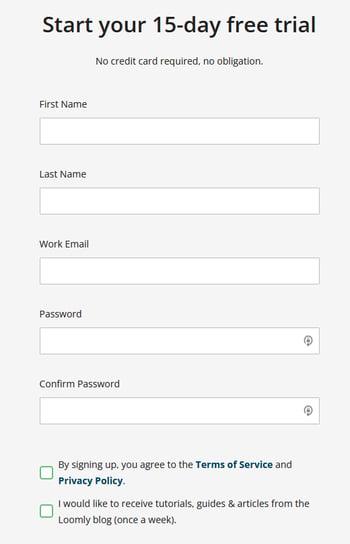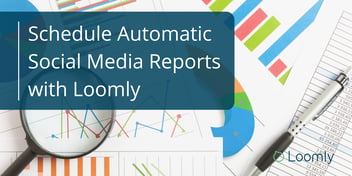Stepping into the world of social media marketing professionals is daunting. It may even drive most people to the brink of sanity.
Today, there are over a dozen popular social media platforms, each with their own unique post types and weekly algorithm updates.
How do social media pros keep up? They certainly don’t manually post on multiple platforms every single day.
In addition to general sorcery, they use planning, research, and scheduling tools to automate as much as possible. This allows social media pros to plan their posts weeks in advance, so they can focus on creative new content ideas (or actually get to log off on a weekend).
In this blog, we’ll help you become a pro at automating your social media posts and explore the best tools and tips to help you do it.
Let’s go!
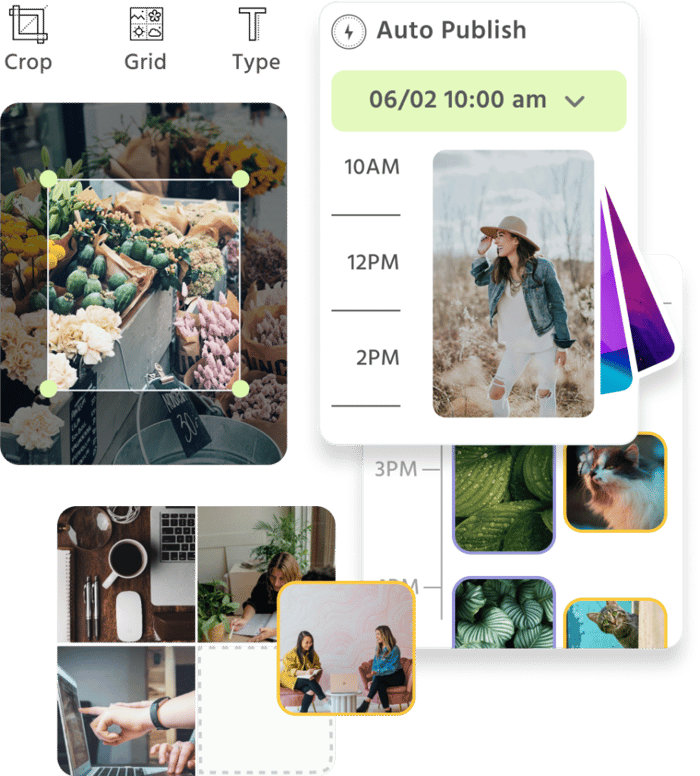
Craft, schedule, & auto-post content to all your social channels, then track analytics and manage interactions from a single, easy-to-use dashboard.
What is social media automation, and how does it help?
Social media automation enables social media marketers to manage more social media platforms and content types in a fraction of the time.
Automation helps to ensure that posts are made on time and scheduled for the most optimal times for exposure, increasing reach and engagement levels with potential customers.
Instead of wasting opportunities by sending out content only when you’re on the clock, setting up a series of preplanned automated posts can ensure your message is delivered at precisely the right time to engage its target audience.
Producers are taking advantage of this powerful tactic. In fact, 44% of marketers are now using social media automation to drive more successful campaigns and maximize ROI.
Social media automation helps businesses maintain a consistent brand tone and message across different platforms. This is essential for successful marketing campaigns, as it ensures a cohesive voice in all messages.
The right combination of automated posts and manual interaction is key to a successful social media presence. It helps create strong, lasting customer relationships while allowing companies to communicate their messages more effectively.
5 benefits of automating social media posts
Creating a full social content calendar spread over multiple platforms takes work, especially when you have limited resources. Utilizing a platform like Loomly to automate your social media posts offers a lot of advantages.
Here’s how.
1. Manage multiple accounts from one platform
With automation tools like Loomly, you can manage all your accounts in one place, helping you stay organized and ensure that nothing slips through the cracks. You can also create more effective campaigns by creating custom posts for each account and tracking all your data in one dashboard.

Some of the platforms you can schedule content for include:
No matter the size of your team or budget, managing all platforms from one convenient location with social media automation tools can streamline your workflow and help you make the most of your time.
2. Optimize your social media schedule
Gone are the days when you had to post on various social media channels manually every day. Automation allows you to be more efficient with your time and energy by pre-scheduling posts for weeks or even months in advance.
When it comes to social media, timing is critical. The right time to post on it depends on various factors, including your target demographic, your platform, and the type of content you’re posting.
Scheduling is the secret weapon pro marketers use to stay active on social media, even if they’re off the clock or away on a well-deserved holiday. Automation ensures that your social network posts are sent out at the optimal times so that publishing content works for you rather than against you.
3. Maintain a more consistent posting schedule
If you want more people to interact with your posts, it’s important that you post regularly. This can be tough when you need more time or resources to keep things consistent.
The right social media scheduling tool helps you schedule posts in advance and create a consistent posting schedule without any extra effort. This way, you can keep up with the latest trends and ensure that your followers see your content regularly across all social accounts.
Automation also helps you avoid potential human error, such as accidentally missing a post or forgetting to include important hashtags or information in your posts.
4. Track your success with social media analytics
Social media automation software has the added benefit of pulling all the essential analytics together across your portfolio of social media accounts.
Analytics provide valuable information about how customers interact with your posts and give you a better understanding of the impact they have. For example, Loomly Analytics provides detailed statistics on key metrics such as engagement, reach, and clicks.
This data can help you determine which content resonates with your audience, when your content performs best, and which platforms produce the most engagement. With this information, you’ll be able to refine your content strategy and ensure that every post delivers real value to your followers.
5. Save time
Social media is the second-largest area of marketing automation. It’s no secret, then, that social media is a time-suck, especially for a small business owner or freelancer.
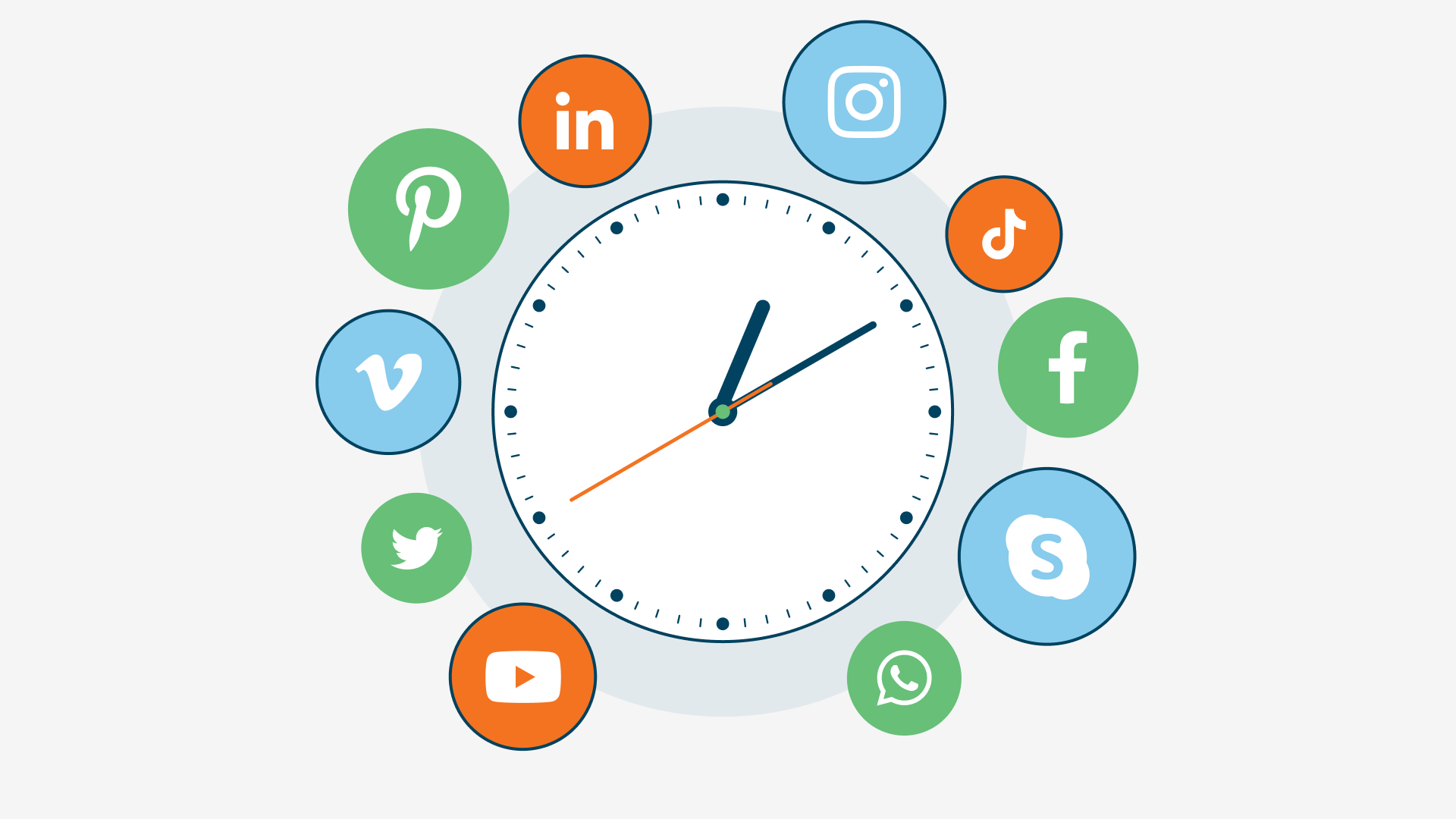
Creating and scheduling content isn’t as simple as posting about your latest product or sale. It involves researching and creating content, crafting a captivating caption, finding the right hashtags, and more.
Automation can help you save time by doing some of these tasks. For example, if you’re using Loomly to schedule your posts, it will suggest relevant hashtags and trending topics that may be related to your post.
How to start automating social media posts
Scheduling is an in-demand feature, and some social media platforms have developed their own automation tools. For example, Facebook and Instagram have their in-app scheduling tools via the Meta Business Suite, and Twitter allows users to schedule tweets.
While these tools are helpful, they often have limited capabilities. For example, users can upload and schedule on TikTok only through the platform’s desktop website and only up to 10 days in advance. Neither Twitter nor Instagram offers suggested hashtag features.
You’ll need to look into third-party solutions for a more comprehensive social media automation experience. Tools like Loomly are feature-rich, allowing you to manage all your social media platforms from one dashboard. Features like trending hashtags, analytics, and bulk scheduling make optimizing your social media presence easy.
Let’s take a deeper look at how you can use social media automation tools to take your content strategy to the next level.
Use Loomly to manage all your social media accounts
Loomly allows you to manage all your social platforms from one dashboard. You can create social posts, schedule them in advance, and track performance metrics across platforms.
Loomly’s bulk scheduling feature also makes it easy to share content between platforms. This means you can save time by creating one post and then duplicating it for each platform with just a few clicks. This feature is also useful for repurposing content — you can write an article once and then use that content to create multiple posts on Twitter, Instagram, and other platforms.
To get started with Loomly and take advantage of its 15-day free trial, all you need to do is sign up for a free account and connect your social media accounts — no credit card required.
Once you’re signed up, we’ll walk you through the process of setting up your first content calendar and connecting the associated social media accounts.
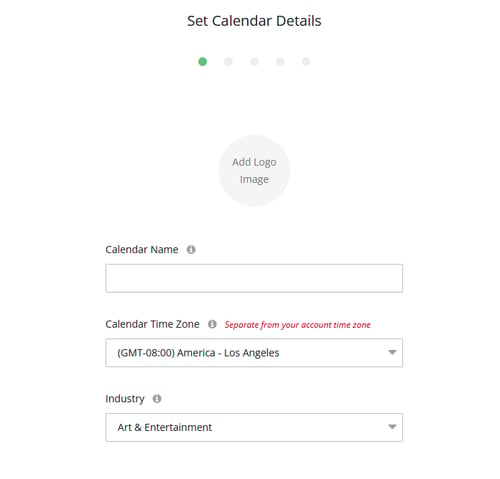
Connecting a social media account to Loomly takes seconds. Choose which account you’d like to connect and you’ll be redirected to the platform to give Loomly permissions on the account.
Please note: to connect Instagram to Loomly, your account must be set to an Instagram business account.
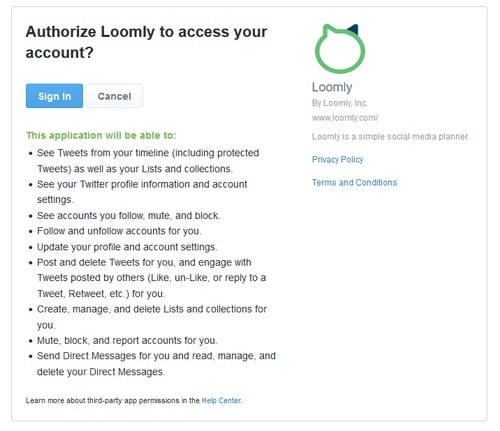
Once you’ve connected the accounts you’ll be scheduling for, you’ll be ready to go. Upload your first piece of content and start building out your content calendar.
Create content for your audience
Any content you make needs to be tailored to your audience and the platform on which you’re posting it. What works for one platform won’t necessarily work for another, and you should also consider each platform’s demographics when creating content.
For example, Twitter is a great place to share news stories and opinion pieces, while Instagram is more visual and image-driven.
You’ll also need to consider the type of language you use — funny and light-hearted content will work better on Twitter, whereas Instagram posts should be more inspirational and professional.
TikTok is the fastest-growing social media platform. As such, other platforms are creating copycat versions, but they each have a unique set of rules and guidelines.
Following trends is also key to creating content. Keep an eye on the latest topics, hashtags, and phrases for each platform to ensure your content stays up to date.
Loomly’s trending hashtag feature can help you stay on top of the latest trends by showing you which hashtags are popular at any given time. This means you’ll be able to quickly create relevant and timely posts. Google Trends is also a valuable tool that can help you keep track of the latest topics and conversations on social media.
Here are some tools that can help you create great content, even if you’ve never edited a photo or video before:
- Canva: Graphic design tool that can help you create stunning visuals for your posts. Free to use, with a paid-for subscription option.
- Unsplash: Stock photo and video library with millions of high-quality images — all available for free.
- Adobe Premiere Rush: Video editing software to help you create professional-looking videos.
- VideoScribe: Video creation tool that helps you create stunning animated videos in minutes.
- Runway: Browser-based editing software that uses AI to help you create stunning visuals.
- Grammarly: Writing assistant that helps ensure your content is error-free and grammatically correct.
- Hemingway Editor: Writing tool that helps you make sure your content is clear and easy to read.
- Notion: Collaboration and note-taking software that helps you collaborate with others on content creation.
- Descript: AI voiceover software that helps you replicate your voice and create professional-sounding audio.
By using these tools, you’ll be able to create content quickly and easily — no matter what platform you’re posting it on.
Start scheduling your social media posts
Once you’ve created your content, it’s time to start scheduling your posts. Loomly allows you to easily manage your social media accounts from one place.
You can set up a posting schedule in advance or use Loomly’s bulk schedule feature to save time on repetitive tasks. You can even plan out an entire month’s content in minutes. Loomly also allows you to preview your post before it goes live so you can make sure it looks great on every social platform.
Open your calendar and hit the “New Post” button to schedule your content.
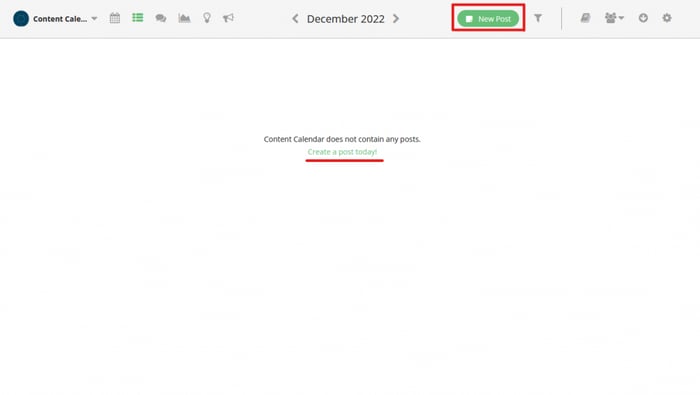
Loomly will suggest some trending topics. For example, if it’s a Thursday, you’ll be reminded about the “Thursday throwback” hashtag popular on Twitter and Instagram.
Next, you’ll need to select which of your accounts you want to post the content to.

Once you’ve chosen the account or accounts, you can add the content and accompanying text. You can also upload any media and use the hashtag finder to find related hashtags quickly.
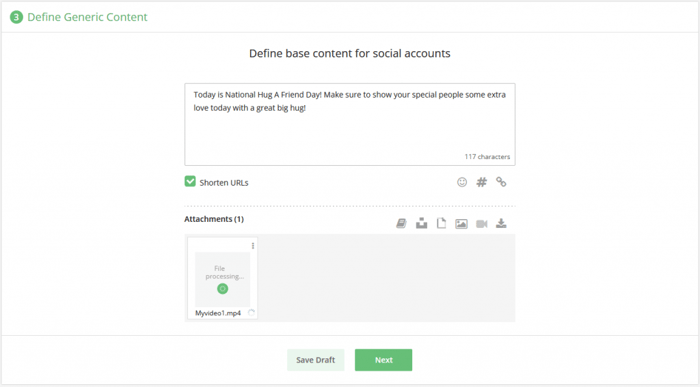
After uploading the media to Loomly, you’ll be able to fine-tune the content for each platform before it’s scheduled. Doing this helps you optimize each post for each social media platform you’re using.
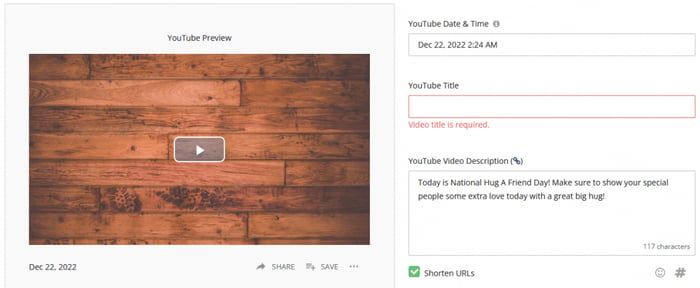
Once everything has been optimized, posts can be scheduled or submitted for approval, depending on your internal processes.
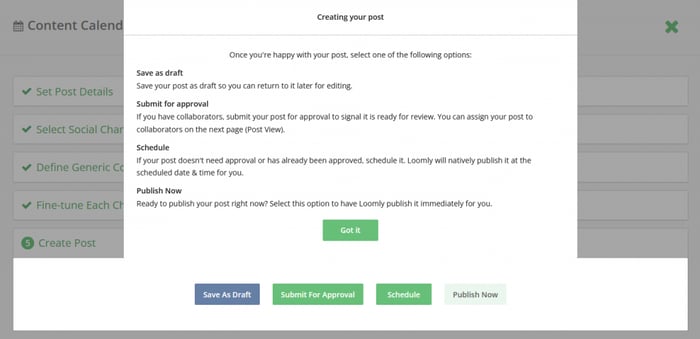
Loomly will handle the rest, and the posts will go live at the time you specified!
Refine your strategy using analytics
Once you’ve started posting, tracking your progress and refining your strategy is important. Loomly’s analytics dashboard can help you do just that by providing in-depth insights into each post’s performance.
Loomly will show you which posts perform better than others and provide detailed information about engagement rates, click-through rates, and more. All of this information can be used to tweak your strategy and create better content in the future.
For example, the analytics dashboard shows you your engagement rate for each post, broken down by platform. This data can help you see which content works best on each platform and adjust your strategy to bring your content to more social media users.
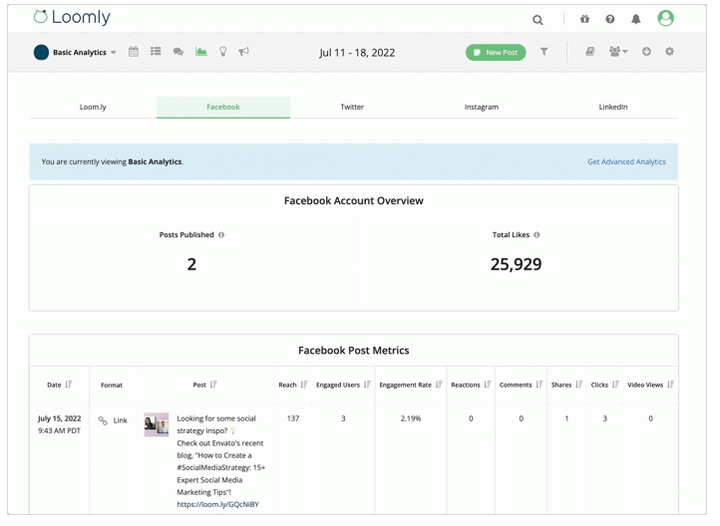
Loomly can show you how your social media campaigns perform from a single dashboard. Find out which social media profiles bring in the most traffic, which audiences are most engaged, and more.
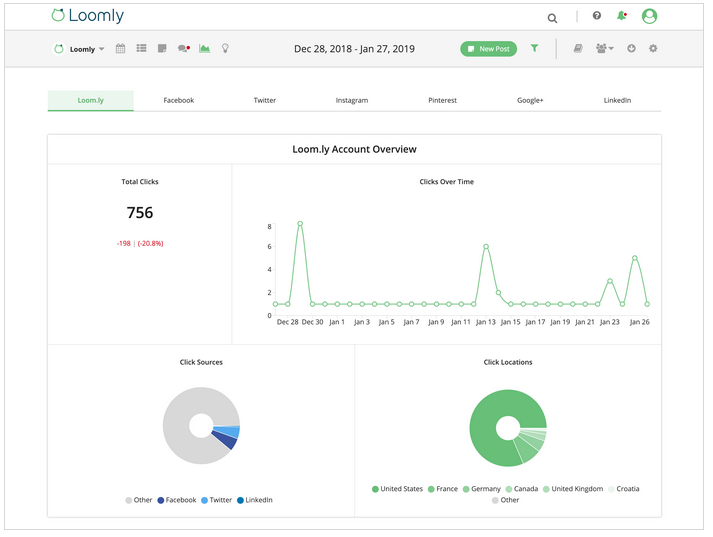
Automation best practices for your content calendar
Content creation and scheduling can take a lot of time, but automation tools like Loomly can help streamline the process. However, try not to rely solely on automation. There are better social media strategies than setting and forgetting.
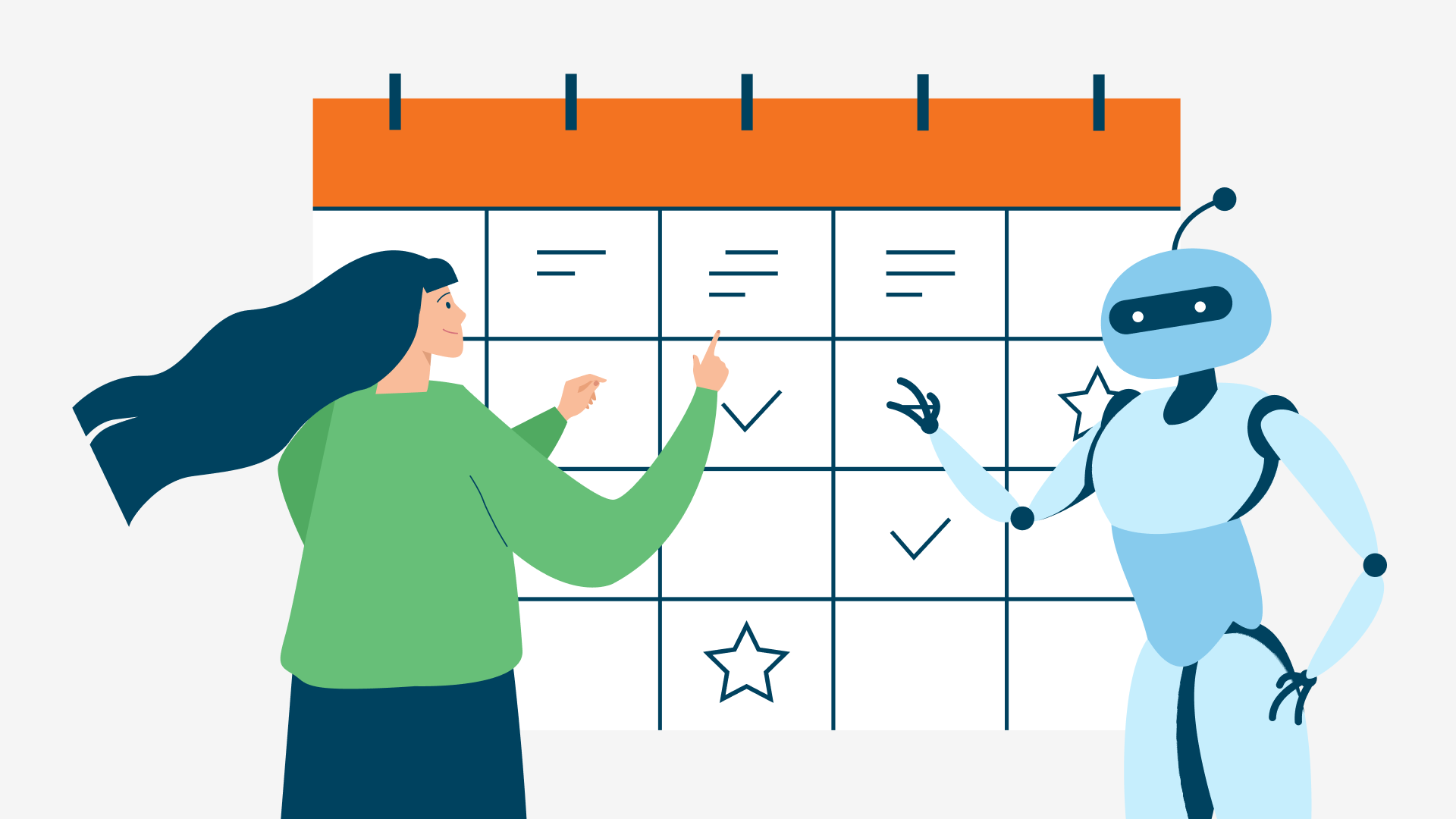
The key is to find the right balance between automation and manual work. You should automate processes wherever possible but also take some time to engage with your audience and give them personalized responses.
Be sure to regularly review your content and use analytics to understand what’s working and what could use some adjustments. Be bold and try new platforms; while TikTok may be just the latest social media network, 39% of Gen Z already rely on the platform for their purchasing decisions.
Here are some best practices to keep in mind when automating your content calendar:
- Create a strategy before you start scheduling: Take the time to plan out your content strategy, and create a posting schedule that works for your business.
- Stay consistent with the social media calendar: Set a schedule and stick to it. Scheduling social media content in advance can help you stay consistent with your posting frequency.
- Take advantage of bulk scheduling: Use the bulk scheduling feature to queue up multiple posts simultaneously for efficient workflow management.
- Optimize content for each platform: Make sure you’re optimizing your content for each platform before it goes live so that it looks great on every social media site. The average person has seven social media profiles, so you want to ensure your content looks good on all of them.
- Monitor analytics to refine strategies: Keep track of how well your posts are doing with Loomly’s analytics dashboard, and adjust your strategies accordingly.
- Get creative with your visuals: Visuals are one of the best ways to engage your audience. Bring your content calendar to life with multimedia assets like photos, videos, and GIFs.
Social media is an ever-changing landscape. Stay ahead of the curve by constantly refining your content strategy.
Conclusion
With its easy-to-use interface, bulk scheduling feature, and comprehensive analytics dashboard, Loomly is the social media management platform that helps businesses create efficient content calendars optimized for success.
By taking advantage of Loomly’s automation tools, you can save time while creating content that resonates with your audience. Keep track of each post’s impact on engagement, and adjust your strategies accordingly to improve performance in the long run.
With the help of automated content calendar management, you’ll be well on your way to reaching your social media goals.

